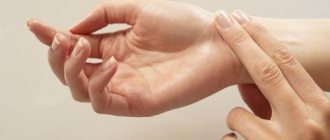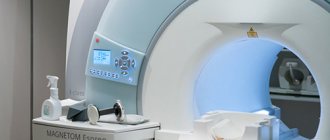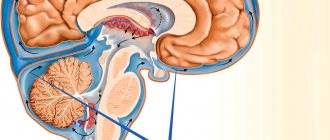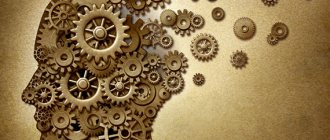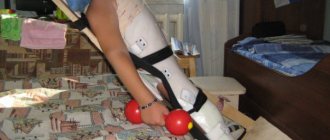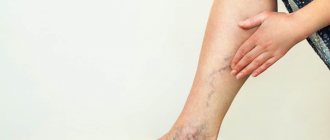This form of cerebral palsy has several names: atonic, atonic-astatic, ataxic. Along with double hemiplegia, it is one of the rarest and most difficult forms to treat.
This form of cerebral palsy is observed with predominant damage to the cerebellum and cerebellar tracts as a result of birth trauma, hypoxic-ischemic exposure or congenital malformations. Also, this form of cerebral palsy can occur when the cerebral cortex (namely the frontal lobe) is damaged.
Causes
There are many reasons for the development of cerebral palsy. The most common ones should be highlighted:
- Intrauterine brain damage
- Hypoxia during childbirth
- Intoxication
- Somatic and endocrinological diseases of the mother
- Rhesus conflict between mother and child
- Anomalies of labor (including birth injuries)
- Past infections
Under the influence of these and other reasons, direct damage to brain tissue occurs, and disturbances in its development processes begin to form. In this case, special attention should be paid to infectious diseases of the mother, which, today, account for more than half of all causes of cerebral palsy in a child.
Morphological changes in brain tissue are varied. Often, a child develops hemorrhages in the interthecal spaces and the brain tissue itself, degeneration of the structures of the cerebral cortex, and cicatricial changes occur. The lesion often affects (but is not limited to) predominantly the anterior parts of the brain.
Additional simulators
To harmonize the intellectual and physical development of children with cerebral palsy, it is necessary to use special exercise equipment that you can buy or make yourself. A lumpy mat is perfect for therapeutic massage and physical exercise and will improve blood circulation in the limbs. Specialized pharmacies sell mats of different sizes: separately for the foot, for the entire body. The rug can be placed near the baby's crib so that he can walk on it in the morning.
To eliminate spasticity of the fingers, which is often observed in patients with cerebral palsy, sew a bag and fill it with cereal (rice, buckwheat). This homemade expander will prepare your hands for grasping and manipulating objects. This way you will get an excellent expander for training your hands. Exercises with jumpers and walkers are also useful for the baby’s limbs.
Note!
You should not buy plastic walkers for a patient with cerebral palsy; they are unstable and can harm the child.
Brain diseases that develop in children require patience and perseverance from parents so that the child’s life is happy and fulfilling. Of course, a complete cure is out of the question, but exercise therapy complexes that are created for such children can achieve a lot. They improve the physical abilities of children and make life easier for parents. Training programs are compiled individually, but with regular implementation they ensure common success for everyone.
Symptoms (forms of cerebral palsy)
The symptoms of cerebral palsy vary greatly. Based on the clinical picture, it is customary to distinguish several different forms of cerebral palsy, each of them will be discussed below.
— Hemiplegic form is the most common form of development of cerebral palsy. Its development is associated with damage predominantly to one of the cerebral hemispheres. In this case, the symptoms of the disease are as follows: paresis of the limbs develops on one side, contractures of the joints of the arms and legs are observed. The muscle tone is increased according to the pyramidal type. In the neurological status, attention is drawn to an increase in all tendon reflexes; pathological reflexes are often caused. Most often, the severity of the phenomena is greater in the arm than in the leg. During active movements, frequent synkinesis attracts attention - hand movements to the side, violent movements. The limbs on the affected side are developmentally delayed. Also quite often, this form of cerebral palsy is accompanied by the development of symptomatic epilepsy and mental development disorders.
— Diplegic form (Little's disease). It is a variant of cerebral palsy, expressed in spastic paresis of mainly the lower extremities. The child is clearly lagging behind in motor development; often such children never begin to walk independently. At the same time, a pronounced increase in muscle tone in the calf muscles makes the gait of such patients very peculiar: patients rely only on their fingers, their knees touch each other while walking, and it seems as if the patient is about to fall forward. This sign is so bright that it allows one to diagnose this form of cerebral palsy at a distance. The neurological examination also shows increased reflexes and pathological foot signs. In most cases, intelligence suffers little.
— The hyperkinetic form develops with damage to the subcortical ganglia (often with Rh conflict). Among the symptoms of the hyperkinetic form of cerebral palsy, hyperkinesis itself comes to the fore - violent movements such as athetosis, chorea, etc. Usually hyperkinesis is varied, but one of them is still of leading importance. As the child grows and develops, the nature of hyperkinesis may change.
— The atonic-astatic form is manifested by a decrease in muscle tone of all extremities and the inability to maintain a vertical posture. Motor skills are practically not developed. Dysarthria often occurs.
— A rare cerebellar (atactic) form develops with predominant damage to the cerebellum. Vestibular disorders, ataxia, disorders of gait and coordination of movements acquire leading importance.
General directions of the program
In the exercise therapy program developed for children suffering from cerebral palsy, experts included physical exercises, breathing training, and work with facial expressions and emotions. With the help of special movements, various muscle groups are developed: abdomen, torso, neck. Work is carried out with the limbs, aimed at improving the child’s motor abilities and making it possible to restore their natural functions. In parallel with it, exercises are given to strengthen the joints.
The set of exercises for infantile paralysis also includes such subtypes of physical therapy as walking, stretching and positioning.
Important!
Physical correction as a method of treatment for the atonic-astatic form of cerebral palsy is impossible without demonstrations and verbal explanations that help build classes according to an individual plan.
Mastering motor functions
Being disabled, the child cannot perform the exercises on his own, so all exercise therapy classes for children are conducted with the support of a doctor or parents. When performing exercises with disabled people, the assistant must take special care and ensure a smooth and slow pace. To improve motor skills, a child with severe diseases of the nervous system needs gymnastics, consisting of the following exercises:
- The baby is placed on his heels, the doctor puts his hands on his shoulders and helps the little patient to kneel.
- Standing behind the child, you need to take his armpits and help him transfer his weight from one leg to the other. When performing the exercise, the patient's arms are spread to the sides and make sure that the second leg comes off the floor.
- Having seated the child on his haunches, the assistant comes from behind, places his hands on the baby’s knees, and begins to slowly tilt his body. Knee extension should occur spontaneously.
- Mastering getting up from a chair. The baby is seated on a chair, the doctor approaches him from the front, carefully presses his feet with his feet, and pulls his arms up so that the child himself tries to stand up.
- Balance training. In order for a child to complete this exercise, he must have two assistants. The baby must be positioned so that he puts one leg forward. Mom and dad take a position behind and in front of the child and perform direct pushes to the chest and back.
- Mastering the steps. The doctor or parent pulls the little patient by the hand, pushing him a little to the sides, thereby helping the baby step.
- Exercise to develop support ability. The child is placed on his back, his legs should be bent at the knees, and the doctor presses his feet firmly to the floor.
Development of the abdominal muscular system
The principle of performing exercises to develop the abdominal muscles for various types of brain disorders in children is the same as for regular abdominal training. The only difference is the presence of an assistant. Description of main positions:
- The adult places the child on his lap and leans forward together with him, holding the baby by the pelvis and knees. The little patient must return to the starting position on his own.
- Revolutions. Having laid the baby on his back, you need to help him swing with either leg so that it turns out to be a coup. If the patient is capricious, return him to a state of calm with gentle words, and then continue the lesson.
- Performing forward bends while sitting on the floor. The baby is placed on the floor, legs should be slightly apart. Holding him by the back, you need to get the child to bend down and reach the floor with outstretched arms.
- Deflection of the spine while lying on the floor. The baby lies on his back, legs and arms are extended, the assistant puts his hand under the lower back and helps the child bend so that the legs and arms do not come off the floor.
- Half somersault or throwing your legs back. Due to problems in the nervous system and the unpredictability of its reaction to strong physical stress, the exercise is performed under strict control. The patient is placed on his back, his legs are raised up and thrown back behind his head. The baby's task is to reach the floor surface behind his head with his toes.
Joint development
Working out the joints is necessary to strengthen the motor abilities of the patient’s limbs. It includes:
- Bend the legs with an assistant while the child is lying on his back; the legs should be straightened at the beginning of the exercise. The amplitude of movement depends on the patient’s level of preparedness.
- Having turned the baby on his side, you need to bend the leg placed on top and move it to the side.
- Having laid the patient on the table so that his legs hang over the edge of the table, the doctor achieves voluntary extension of the limbs by the child himself. Independent movements lead to increased muscle tone and enhance the mental activity of the brain.
- Spring. The baby is placed on his stomach, with a cushion placed under the pelvis. The assistant takes hold of the patient's hands and makes gentle jerks.
- Arm bending. The baby is placed on his back, his head is turned to the right or left. Then they begin to bend the arm that he is looking at, helping the baby not only develop muscles, but also visually remember the technique of movement.
Exercises for the muscles of the body and neck
Working with the upper sections of the muscle corset helps develop posture and improves blood flow in the brain and cervical region. To help sick children, the following movements are included in the training:
- Having placed the patient on his back, you need to hold him by the shoulders with your hands and rock him slightly. Then swinging is done with the head, while simultaneously achieving rotation of the neck.
- The patient is on his side, one arm is located under the head, the second is extended along the body. The doctor gently pushes the baby in the back or chest, and he should not fall, maintaining balance.
- The head is on a hinge. The baby is placed on a chair, the head is lowered down. The doctor twists it in different directions. Fixing it in a certain position, he releases his head so that it falls freely onto his chest.
Diagnostics
Diagnosis of the disease is usually based on the presence of a cause that led to cerebral palsy, as well as the clinical picture and neurological status. In modern medicine, neuroimaging methods such as MRI and MSCT are also important, but their use is limited by the need for anesthesia during the study. *MRI image for cerebral palsy
Also, in the presence of symptoms such as epileptic seizures, delayed mental and motor development, research methods such as EEG, Echo-EG, psychological testing, etc. can be useful.
Gymnastics for the pool
Swimming is very beneficial for children with cerebral palsy; it helps them relax and energizes them. Pool exercises:
- A child goes down into the pool and grabs the side with his hands. The legs are alternately pulled back (5 times each). Then the legs are spread to the sides 10 times.
- Turning over with his back to the side, the baby clings to it with his hands, lifts his legs up and spreads them to the sides. Do this 10 times.
- Having laid the patient with his back on the water, you need to let him grab the side. The mother places her hands under the baby's back. Begin by lifting both legs up (10 times), spreading them to the sides (10 times), crossing the legs (“scissors” 10 times).
- Turn the patient over onto his stomach, let him hold the side with his hands, and you support him by the stomach. Do alternating leg lifts 5 times, then sideways 10 times, and bending the knees of each limb 5 times.
- With your child's back against the pool, ask him to take a sitting position. Then he must spin the “bicycle” with his legs in the water.
Course of the disease and life prognosis
Cerebral palsy, especially at an older age, is not a progressive disease, but the presence of persistent residual consequences of brain damage. In this case, as a rule, there is regression of symptoms to one degree or another. The possibilities for compensating for impaired functions are quite large in early childhood, and sometimes make it possible to achieve almost complete recovery.
It is difficult to assess the signs of cerebral palsy at three months of age, or, say, at the age of 6 months. The phenomena of developmental delay and signs of paresis of the limbs come to the fore. However, each case is individual, and it is impossible to identify the exact signs of cerebral palsy in the first year of life.
The life prognosis of patients with cerebral palsy is usually favorable. Patients live to a ripe old age and can have offspring. A decrease in average life expectancy is often associated with mental underdevelopment, lack of social adaptation, as well as the frequent presence of symptomatic epilepsy.
Treatment
Therapy for cerebral palsy is a multifaceted task. It must be comprehensive and include medications, physiotherapy, psychotherapy, speech correction, massage, the use of special orthopedic devices, and physical therapy.
— Among drug therapy, the most important is given to neuroprotective drugs (Cortexin, Actovegin, Cerepro), as well as muscle relaxants (baclofen, mydocalm) to relieve spasticity. Vitamin and other metabolic drugs are widely used. If necessary, sedatives are used. The presence of symptomatic epilepsy presupposes the use of antiepileptic drugs.
— Physiotherapy, physical therapy, massage are aimed at reducing the lag in motor development. Also, activation of motor function helps to improve the mental development and social adaptation of a patient with cerebral palsy.
Recently, methods of treating cerebral palsy such as hippotherapy (treatment with contact with horses) have become fashionable. However, these techniques are not always available and, as a rule, expensive, so they are not widely used.
Breathing exercises
Breathing exercises can be easily learned at home. Basic starting positions - standing and lying on your back:
- When working with a child’s breathing, you need to put the training into a playful form. Take a pen or thin sheet of paper and ask your child to blow on it. Blowing soap bubbles also helps.
- Breathing on a count. On the count of 1, 2, 3 the baby inhales deeply, on 4, 5, 6 he exhales. As a game element, you can exhale into a bowl of water.
- Pronouncing sounds while exhaling is aimed at the comprehensive development of speech abilities. Give your child a whistle or harmonica to play with and let him blow as much as he can. Learn songs with him.
